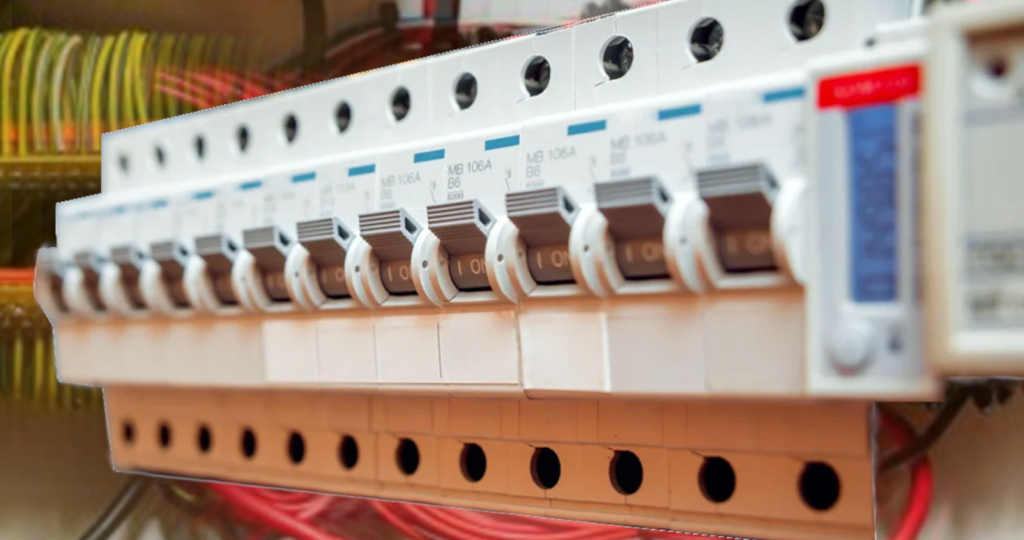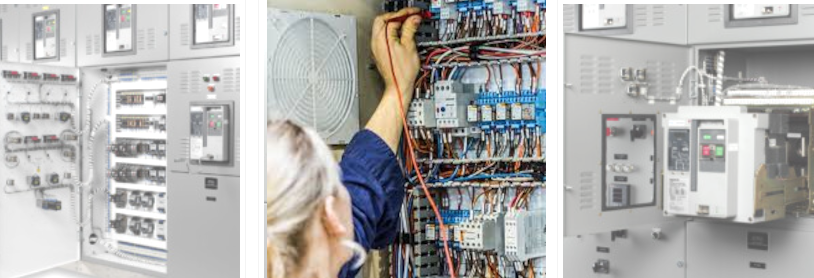Are you looking into the cost of upgrading, replacing or installing an electrical switchboard for your facility or building power distribution system? This is a big decision, and to understand just how important switchboards are, let’s look at an analogy that helps explain what electric power switchboards are and what they do in your facility.
Need Switchboards For Your Project?
Get A Switchboard QuoteSell To Us
Got Electrical Equipment You Don't Need?

Reduce Your Electrical Inventories & Earn Cash
Sell My EquipmentPanelboard
Need a Panelboard for Your Project/Job?

Our Experienced Sales Engineers Can Help Design the Right Panelboard For You
Learn MoreTransformer Oil Testing
Is Your Transformer Due For Servicing?

Get Your Oil Analysis & Fluid Testing Done By Our NETA-Certified Techs
Learn MoreElectrical Product Resources
Product Training Product Safety Product Guides Product News Featured Products
Let’s use an airport analogy. Switchboards are the main air traffic control tower. Just as the control tower oversees the entire airport’s operations, switchboards handle large-scale electrical installations with high power demands. They’re the central hub for power distribution, coordinating the flow of electricity to various areas and equipment within a facility.
Switchboards and Panelboards are Close Cousins
We’ve discussed lighting control panelboards and power distribution panelboards in previous posts. In electrical installations, electric panelboards and switchboards are essential equipment. If Switchboards offer central control, Panelboards, on the other hand, are the local control towers near specific sections of the operation. They distribute power to specific areas or equipment within a facility.
Switchboards make it possible to control the flow of electricity safely and effectively throughout entire regions of a building or facility. Setting up and handling electrical circuits, providing circuit protection, and distributing electricity to multiple locations or pieces of equipment are possible with switchboards. They protect against overloads and short circuits by surrounding circuit breakers or fuses, reducing the possibility of electrical fires or equipment damage.
Electrical Switchboard Components, Construction and Features
Switchboards typically consist of various components, a metal enclosure, busbars (mounting hardware) for power distribution, circuit breakers or switches for circuit protection, control devices, meters for visualizing electrical parameters, and wiring terminals for combining incoming and outgoing electrical conductors. These are among the usual components and their purpose in switchboards:

High Load Capacity: Switchboards are made to withstand heavy electrical loads and power requirements, making them ideal for installations of a large scale.
Multiple Circuits: Switchboards typically have more circuits available, enabling complicated electrical layouts and distribution to different pieces of equipment or spaces.
Safety Systems: Including ground fault detection systems, relays, and circuit breakers to ensure safe operation and stop damage from electrical faults.
Power Source Management: For effective and dependable power distribution, switchboards manage power sources, including utility feeds, backup generators, and alternative energy systems.
Monitoring: Meters, displays, or monitoring systems that provide real-time information on voltage, current, power factor, and energy consumption.
Busbars and Distribution: Switchboards use busbars, strong metal bars, to distribute electricity to different electrical equipment and circuits.
Control and Automation: For automating and controlling electrical equipment, switchboards can be fitted with control devices like motor starters or programmable logic controllers (PLCs).
Electrical Switchboards for Your Facility’s Heavy Loads
Electrical Power Switchboards are able to handle heavy electrical loads, making them perfect for facilities with high power needs. They have enhanced protection including circuit breakers and relays, along with other advanced protection systems in switchboards, to provide good circuit protection by reducing electrical faults, overloads, and short circuits. They’re also adaptable in circuit layouts, allowing the distribution of electricity to many locations or pieces of equipment in with specific power needs.
f you’re looking for electrical power Redundancy and Backup, switchboards can be built with redundant components to allow backup power sources and guarantee uninterrupted power supply in important applications. Facility managers like advanced monitoring and control. Switchboards are packed with monitoring and control systems for real-time monitoring of electrical parameters as well as control over equipment and power distribution.
Choosing a Switchboard and Panelboard for an Application
Power Requirements: Consider the installation’s power requirements. Switchboards are made for bigger installations with high power requirements, while panelboards can be used for smaller installations with lower power requirements.
Circuit Complexity: How complex does your layout need to be? Switchboards give more choices for complex layouts and numerous power sources, whereas panelboards offer greater flexibility in circuit architecture.
Your Electrical Budget: Take into account your project’s financial restrictions. In general, panelboards are less expensive than switchboards.
Scalability: Examine the potential for future growth or rising demand for energy.
Level of protection and safety features: Switchboards frequently include more sophisticated monitoring and protection systems.
Space Restrictions: Take into account the space that the electrical distribution equipment will need. Comparing panelboards to switchboards, panelboards typically take up less space.
Central or Localized Control of Your Power Grid
You can decide whether to select a panelboard or a switchboard for your particular electrical installation needs by considering these factors. Both switchboards and panelboards play vital roles in their respective electrical systems. The switchboard ensures efficient power distribution on a larger scale, while the panelboard provides localized control and distribution. Each serves a specific purpose based on the size and complexity of the electrical installation, just as the air traffic control towers are designed to handle different areas and types of operations within an airport.
Now you should have a basic understanding of what an Electrical Switchboard is, what it does and what’s inside. If you’re planning to replace an electrical power switchboard, Relectric stocks new and professionally tested switchboard components. Contact one of our sales and service consultants today at 800.497.6255.
